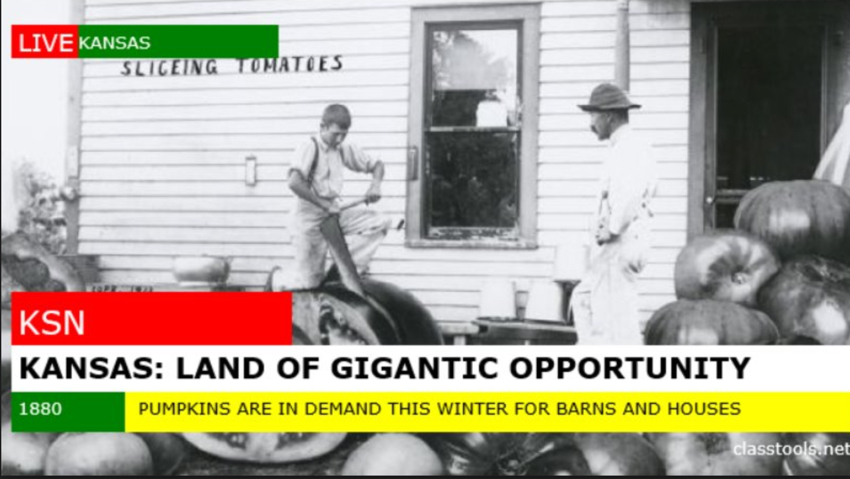ESSDACK PLC meets Russel Tarr & ClassTools. Everyone Gets Smarter.
The activity led to a great conversation around effective tools and resources that teachers and students can use while accessing and organizing online information.
We had just spent an hour or so using Russel Tarr’s simple but powerful Breaking News Generator. I wanted to talk a bit about online civic literacy and combating fake news. So I had asked our ESSDACK social studies PLC that had gotten together to use Russel’s tool to create two different stories – a factual Breaking News story and one that was biased or fake.
And, of course, the group came through in typical fashion.
The activity led to a great conversation around effective tools and resources that teachers and students can use while accessing and organizing online information. But it also led to another discussion about all of the tools available at Russel’s awesome ClassTools.net site.
Most of the group hadn’t heard of or used ClassTools.net before. So we explored some other tools including Headline Generator:



Well . . . that led to me sharing a bit about Russel’s book A History Teacher’s Toolbox. The book is a treasure trove of great ideas and because we were figuring out ways to help kids make judgments about online evidence, teachers quickly browsed over to the chapter dealing with interpretations.

I didn’t think much about it until yesterday when I ran across a Tweet from Matt Doran talking about a strategy in the same chapter. Called Diamond Diagrams, the strategy asks kids to make sense of an event by prioritizing statements, ideas, or documents from most to least important.
So, like Matt, you might ask students to rank different causes / influences of the American Civil War:
Tools and ideas to transform education. Sign up below.
But it works with all sorts of different topics and events. The cool thing about the strategy is that it’s a bit more complex than simply putting things in order. Because the final product is in a diamond pattern, kids have to make clear decisions about their rankings – including which ones might have a similar importance.

Steps in the strategy:
- Provide student groups of two or three with nine ideas or reasons that address your topic. Or ask kids to research and develop their own list.
- Ask each group to complete the diamond diagram – putting the most important at the top, followed by two in second place, three in third place, a further two and then the last one representing the least important on the bottom row.
- The goal is that the group comes to a consensus amongst themselves about where the nine items fit best. This will involve conversation and justification on the order of cards.
- Each group should then make a gallery walk and view ow other groups ranked their ideas. You could ask two groups to combine and develop a third diamond based on that new conversation.
- In most cases there is no right or wrong order – the learning happens from the discussion and
- negotiating.
- Ramp up the difficulty a bit by providing 12 items and asking groups to eliminate four of them before their final ranking. Or provide just six and require them to find another three.
- You can also use primary sources, photos, cartoons, or even images of artifacts instead of statements or ideas.
The Diamond idea has been around for a while but I like how Russel has developed and shared his templates – including one that requires kids to explain their thinking. Sam Wineburg talks about how writing is evidence of thinking. This is a perfect example of kids combining historical thinking and literacy skills at the same time.
cross posted at glennwiebe.org
Glenn Wiebe is an education and technology consultant with 15 years' experience teaching history and social studies. He is a curriculum consultant forESSDACK, an educational service center in Hutchinson, Kansas, blogs frequently at History Tech and maintains Social Studies Central, a repository of resources targeted at K-12 educators. Visit glennwiebe.org to learn more about his speaking and presentation on education technology, innovative instruction and social studies.
